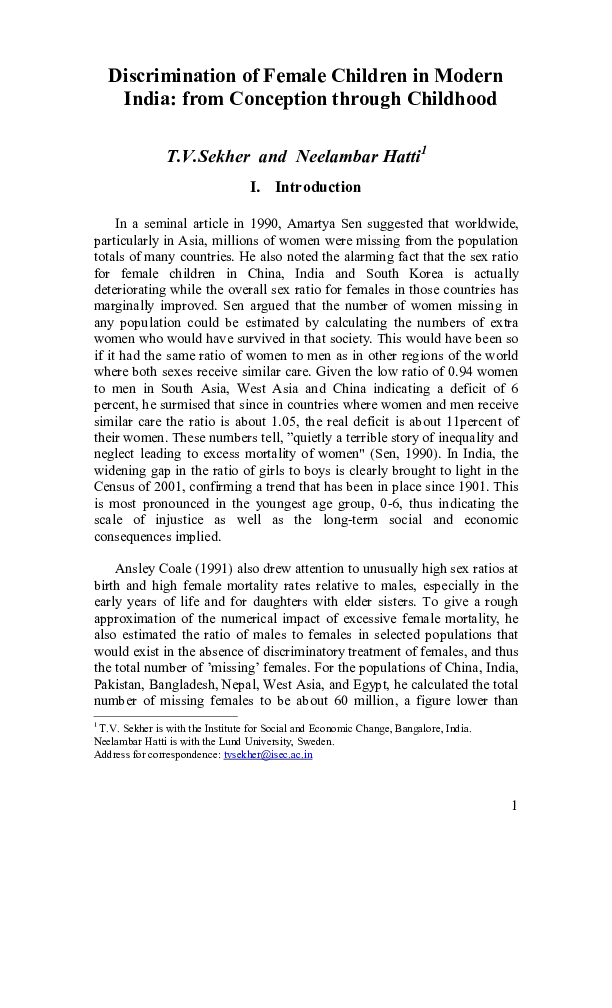
Resources
Discrimination of Female Children in Modern India: from Conception through Childhood
Resource date: 2005
Author: UNFPA
Publisher: UNFPA

Resources
Resource date: 2005
Author: UNFPA
Publisher: UNFPA
In a seminal article in 1990, Amartya Sen suggested that worldwide, particularly in Asia, millions of women were missing from the population totals of many countries. He also noted the alarming fact that the sex ratio for female children in China, India and the Republic of Korea is actually deteriorating while the overall sex ratio for females in those countries has marginally improved. Sen argued that the number of women missing in any population could be estimated by calculating the numbers of extra women who would have survived in that society. This would have been so if it had the same ratio of women to men as in other regions of the world where both sexes receive similar care. Given the low ratio of 0.94 women to men in South Asia, West Asia and China indicating a deficit of 6 percent, he surmised that since in countries where women and men receive similar care the ratio is about 1.05, the real deficit is about 11percent of their women. These numbers tell, ”quietly a terrible story of inequality and neglect leading to excess mortality of women" (Sen, 1990). In India, the widening gap in the ratio of girls to boys is clearly brought to light in the Census of 2001, confirming a trend that has been in place since 1901. This is most pronounced in the youngest age group, 0-6, thus indicating the scale of injustice as well as the long-term social and economic consequences implied.